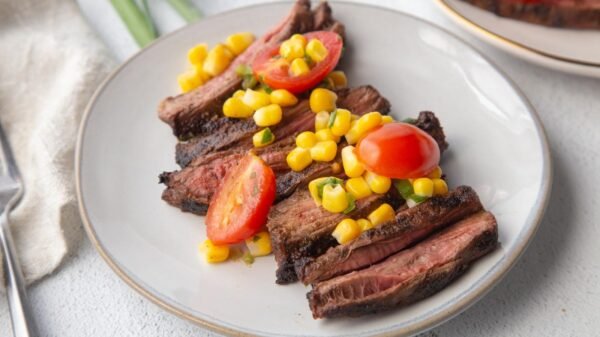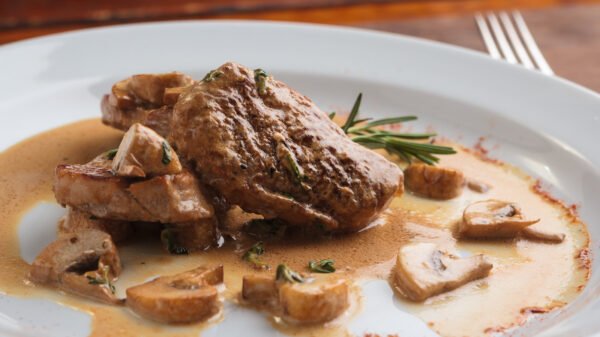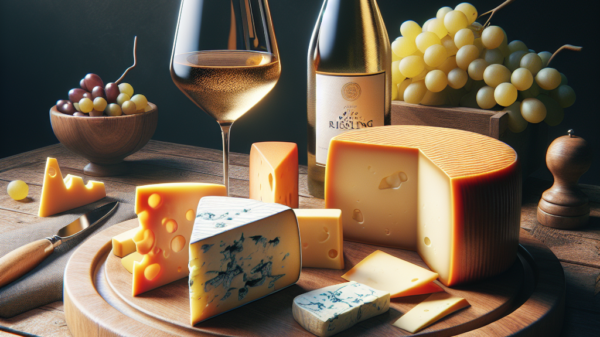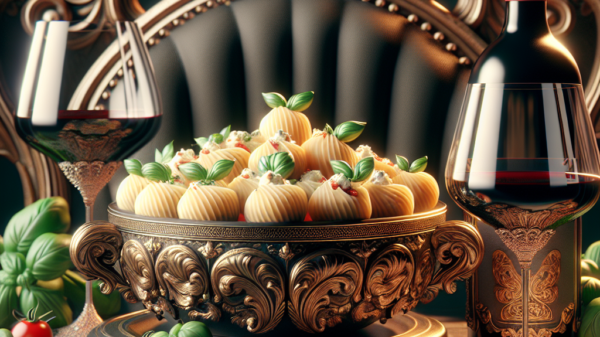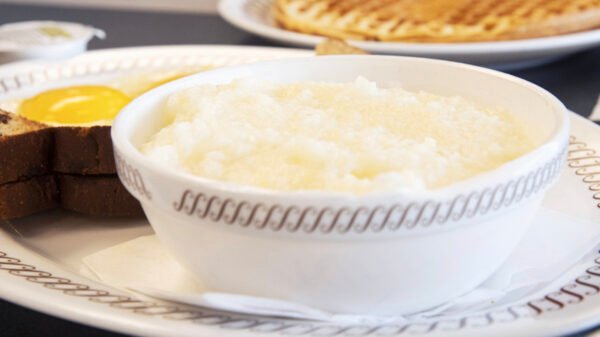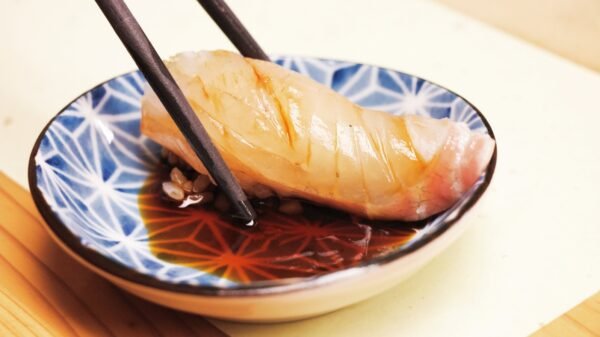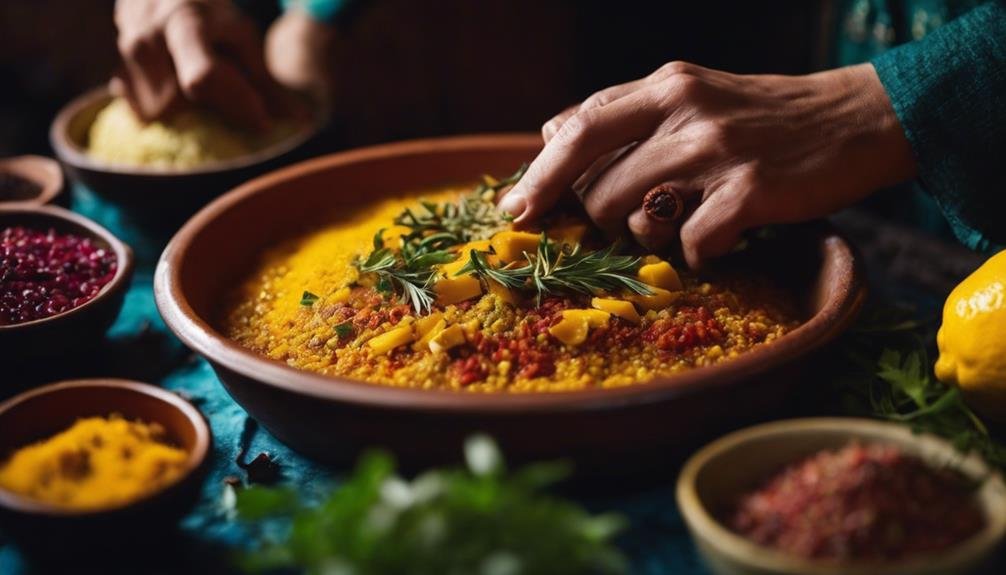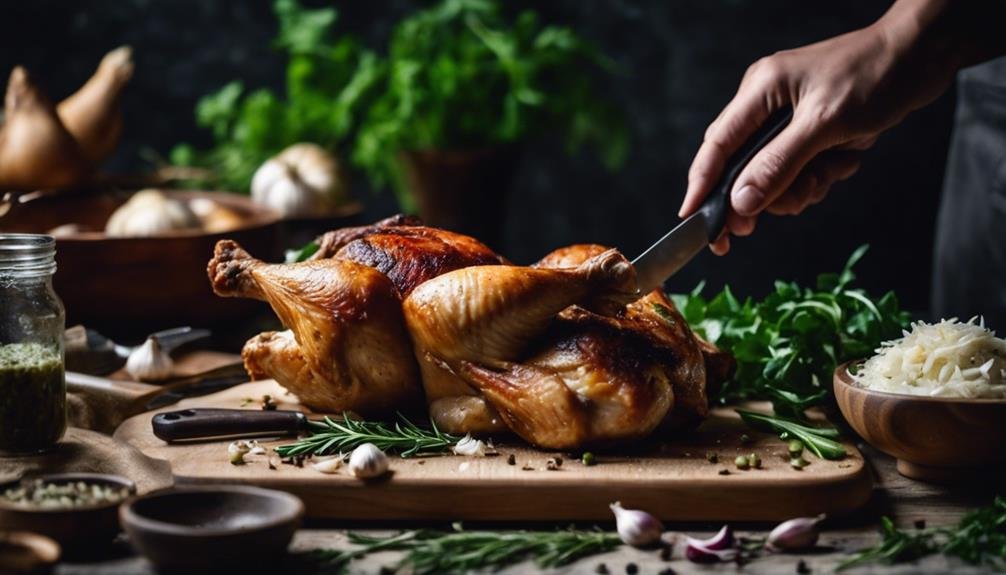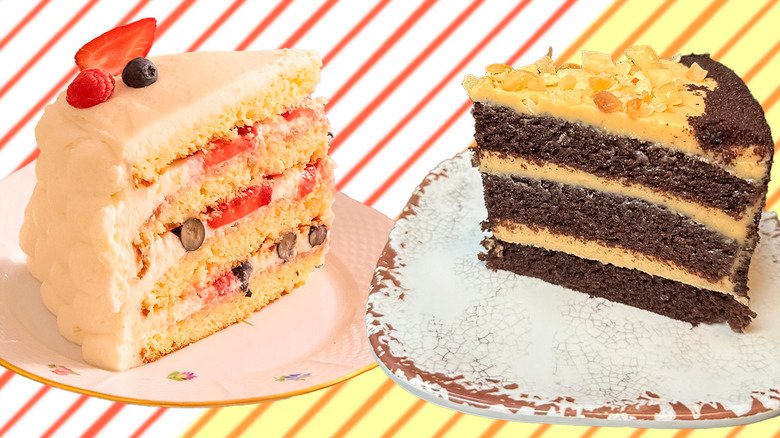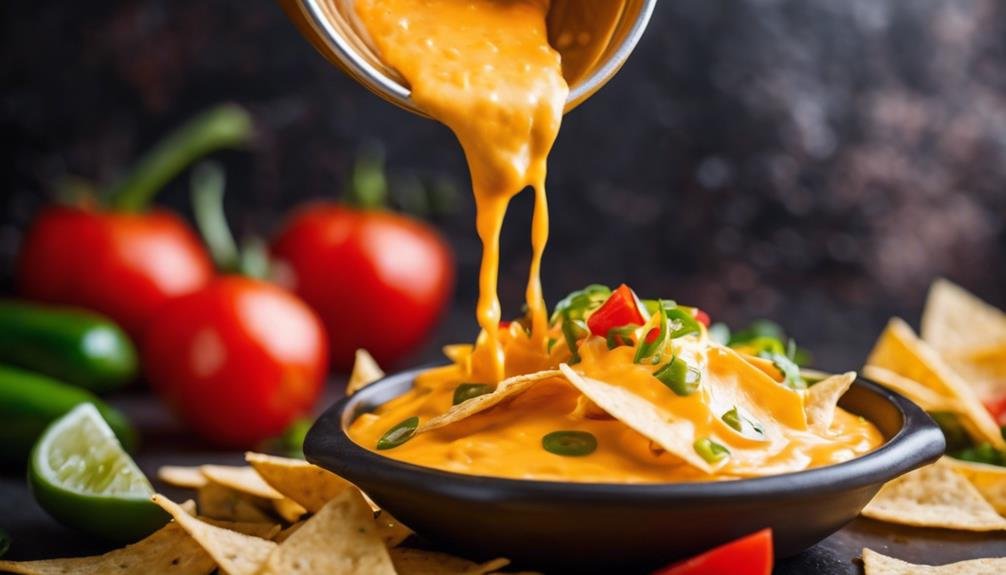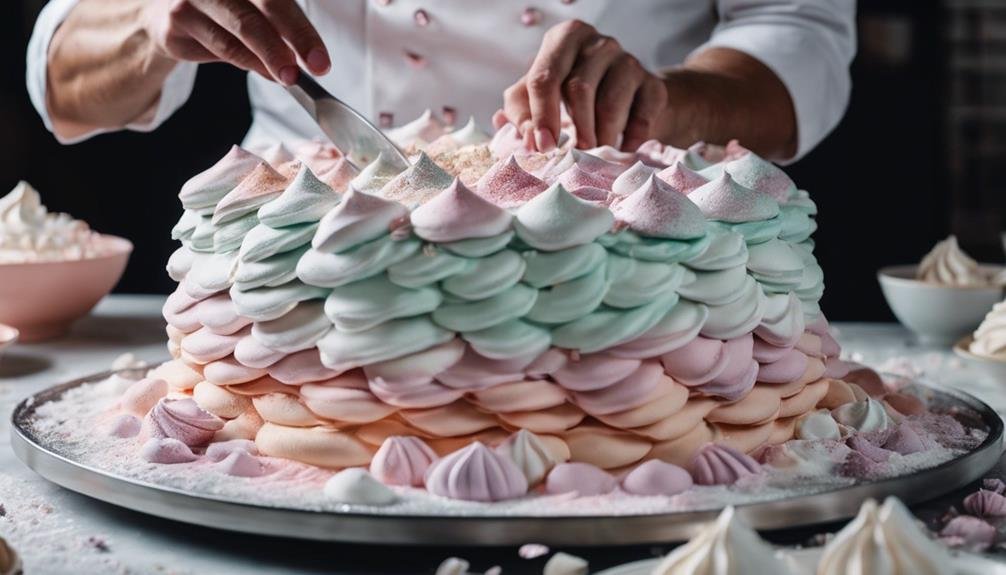Embarking on mastering Moroccan cooking with a tagine is akin to unlocking a treasure chest of flavors, where each step is a gem waiting to be polished.
You’ll start by selecting your tagine, an earthenware pot that’s not just cookware but a vessel of tradition. Seasoning your tagine is the first rite of passage, ensuring it’s ready to embrace the layers of savory meats, vibrant vegetables, and the symphony of spices that define Moroccan cuisine.
As you build the base layer and explore the art of mixing spices, you’re not just cooking but weaving a tapestry of tastes and aromas. Yet, the journey doesn’t end here. The subtleties of managing cooking temperatures and the grand finale of adding final touches before serving are their chapters, promising a culinary adventure you won’t want to miss.
So, why stop now when the secrets to transforming simple ingredients into a feast for the senses are just around the corner?
Cooking With a Tagine Key Takeaways
- Choose the right tagine, clay or ceramic, based on your cooking style and flavor preferences.
- Build a flavorful base layer with onions, vegetables, and Moroccan spices to enhance the dish.
- Layer ingredients thoughtfully, placing meat at the center and vegetables around for even cooking and flavor absorption.
- Slow-cook on low to medium heat, using a heat diffuser if necessary, to tenderize ingredients and meld flavors beautifully.
Selecting Your Tagine
Starting your Moroccan culinary adventure begins with selecting the right tagine, the iconic clay or ceramic vessel key to mastering those richly flavored dishes. Picture yourself, apron on, ready to wow guests with an authentic Moroccan feast. The choice between clay and ceramic isn’t just about aesthetics; it’s about functionality and matching the tagine to your kitchen’s capabilities.
Clay tagines, the traditionalists’ choice, thrive over coal or wood fires, perfect for those willing to go the extra mile for authenticity. Their unglazed surface imparts a distinct earthiness, a whisper of Moroccan terroir, into every bite. However, a ceramic or glazed tagine is your ally if you’re more about convenience without sacrificing style. Designed for the modern kitchen, these beauties work wonders on gas or electric stoves and even in the oven.
But let’s not forget the lid, the conical masterpiece responsible for the magic. It’s not just a cover; it’s a sophisticated system for steam circulation, slowly weaving those complex flavors into your dishes. So, when selecting your tagine, ponder not just the material but how it’ll contribute to the dance of flavors you’re about to orchestrate.
Seasoning Your Tagine
Before you explore Moroccan flavors, it’s important to season your tagine, ensuring it’s ready to deliver those sumptuous, slow-cooked dishes without a hitch. This isn’t just about delving into tradition; it’s a rite of passage for your earthenware comrade. Let’s delve into the nitty-gritty of seasoning your culinary cohort, shall we?
First off, give your tagine a good soak. Submerge the base in your sink overnight. This isn’t a spa day; it’s boot camp for your tagine, preparing it for the battles in the kitchen. Next, it’s time for a garlic rubdown. Think of it as an ancient Moroccan secret, infusing your tagine with a hint of flavor from the get-go.
But wait, there’s more! Fill that bad boy halfway with a mix of water and vinegar, then let it simmer away until the liquid nearly bids farewell. This process isn’t just for fun—it’s important for preventing unsightly cracking during cooking.
Building the Base Layer
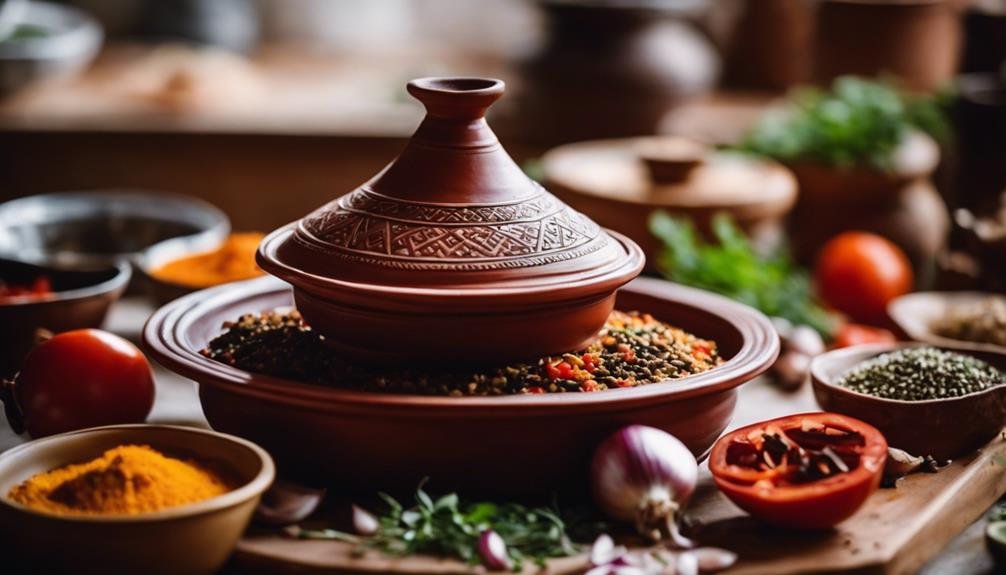
Now that your tagine is seasoned and ready let’s focus on crafting the perfect base layer. Onions or vegetables become the unsung heroes, making sure nothing sticks and everything tastes divine. This isn’t just about tossing in your favorites willy-nilly; it’s about building a foundation to make your tagine recipe stand out.
First off, think of your base layer as the bedrock of flavor. By arranging onions or a mix of vegetables at the bottom, you’re doing three important things:
- Preventing your masterpiece from sticking to the tagine, saving you a headache later.
- Infusing every morsel with an even, well-balanced flavor that’s bound to impress.
- Creating a sumptuous sauce that’ll have everyone reaching for seconds.
Remember to strategically place slices of garlic amidst your vegetable layer. This isn’t just for show—it’s about adding depth and character to your dish in a way that only garlic can. Properly building this base ensures your tagine is more than just food; it’s an experience brimming with flavors that dance across the palate, making sure a well-balanced and memorable meal.
Mixing Moroccan Spices
Diving into the heart of Moroccan cuisine, it’s essential to master the art of mixing spices. Ingredients like cumin and paprika become the soul of your tagine. Imagine crafting a potion in your kitchen, where each spice adds magic to the concoction. Moroccan spice blends are your wand, transforming simple ingredients into aromatic wonders. You’ll find yourself swirling together cumin for its earthy warmth and paprika for that smoky undertone, creating a base that’s anything but basic.
But why stop there? Ginger, turmeric, and cinnamon come into play, each adding a layer of complexity. Think of ginger as the zesty kick, turmeric as the golden glow, and cinnamon as the sweet embrace in your spice symphony. And let’s not forget about the superstar ensemble cast – ras el Hanout with up to 30 spices, saffron offering floral notes, harissa for the fiery souls, and the harmonious trio of coriander, cardamom, and cloves. Each has a role, ensuring your tagline sings with bold yet balanced flavors.
Layering Meat and Vegetables

Assembling your tagine is akin to layering flavors in a symphony, with meat as the centerpiece and vegetables as the harmonious accompaniment. When you explore Moroccan tagine recipes, the art of layering meat and arranging vegetables becomes important. Here’s why:
- Flavor Preservation: Placing the meat bone-side down prevents scorching and guarantees that the meat cooks in flavorful juices, enriching the entire dish.
- Even Cooking: Arranging vegetables around the meat allows them to cook evenly in the released juices, absorbing the authentic taste of the spices.
- Visual and Aromatic Appeal: A well-garnished dish, be it with herbs, olives, or preserved lemons, not only enhances the visual appeal but also adds layers of aroma that promise a feast for the senses.
Seasoning with spices like cumin, turmeric, and paprika brings the authentic taste of Morocco to your kitchen. Remember, a well-balanced dish satiates the palate and the soul. Garnishing with herbs and other additions ensures your tagine has that burst of visual appeal and aroma, making your Moroccan culinary journey an unforgettable experience.
Managing Cooking Temperatures
After mastering the art of layering meats and vegetables in your tagine, focusing on managing cooking temperatures is essential to truly bring out the flavors and textures that define this Moroccan culinary masterpiece. Your clay or ceramic tagine is a marvel of traditional cooking, but it demands a little know-how to prevent it from becoming a tragic kitchen relic. Here’s the lowdown on keeping that tagine in tip-top shape:
| Do’s | Don’ts |
|---|---|
| Use a heat diffuser for even heat distribution. | Expose the tagine to sudden temperature changes. |
| Keep the heat low to medium for gentle cooking. | Let the pot sit on high heat; it’s a no-go. |
| Monitor the heat to avoid the dreaded burn or stick. | Forget the importance of heat control. Your tagine’s not forgiving. |
| Embrace slow cooking techniques for flavor infusion. | Rush the process. Good things take time, especially tender dishes. |
| Be consistent with your heat for the most flavorful, tender outcomes. | Ignore signs of distress. Your tagine communicates; listen to avoid cracking. |
Final Touches and Serving
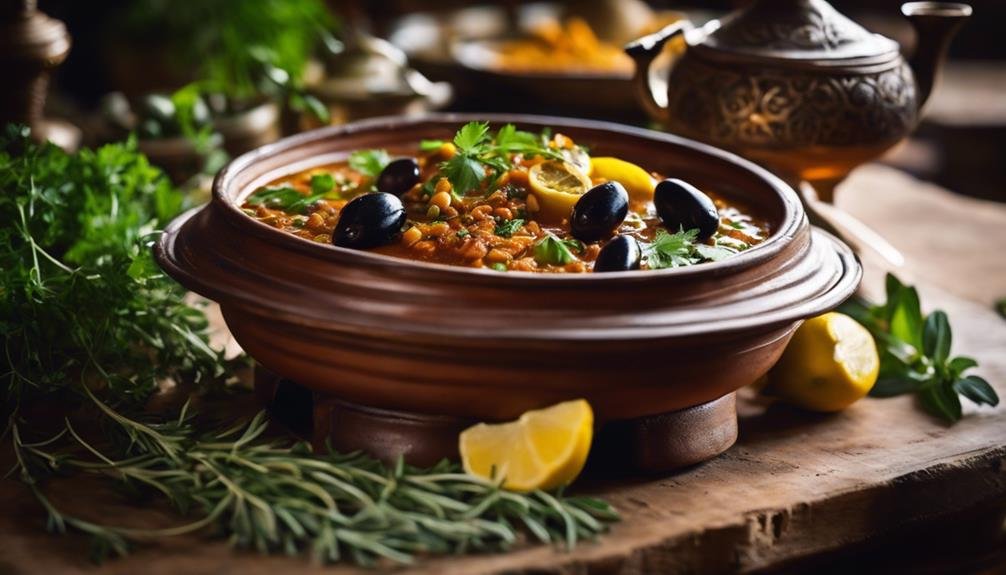
Once your tagine masterpiece has gently simmered to perfection, it’s time to elevate its presentation and flavor with some vibrant, final touches before serving. Begin by garnishing your dish with colorful bell pepper strips, preserved lemon, olives, and fresh herbs. This adds a pop of color and enhances the flavors, making each bite a delightful adventure.
For a truly authentic experience, consider these traditional accompaniments:
- Couscous – perfect for soaking up the flavorful sauce and adding a fluffy texture contrast.
- Moroccan bread is ideal for scooping up the succulent pieces and ensuring no drop of sauce is left behind.
- Let the tagine rest – allowing it to sit for a few minutes melds the flavors together, intensifying the aroma and taste.
Arrange the ingredients meticulously for an attractive table presentation, showcasing the dish’s vibrant colors and textures. Encourage communal dining by placing the tagine in the center of the table. This highlights the beauty of Moroccan cuisine and fosters a shared culinary adventure, inviting everyone to immerse in the flavorful sauce and enjoy the variety of textures together.
Frequently Asked Questions
How Do You Cook Moroccan Tagine?
Cooking a Moroccan tagine involves initially seasoning it, then layering onions, meat, and vegetables, with a small amount of liquid added. The dish is slowly simmered over low heat and typically served with couscous, garnished with fresh herbs for an authentic flavor.
What Are the Principles of Tagine Cooking?
The principles of tagine cooking involve embracing slow, moist heat, using minimal liquid, and seasoning properly with spices such as cumin, paprika, and saffron. It is crucial to layer flavors effectively and allow the conical lid of the tagine to circulate steam, enhancing the cooking process.
How Do You Layer a Tagine?
Layering a tagine involves beginning with onions or vegetables at the base to prevent sticking, placing the meat in the center with the bone side down, arranging seasoned vegetables around it, and finishing with vibrant garnishes for added flair.
Should a Tagine Have a Hole in the Lid?
Yes, a tagine should have a hole in the lid. This feature is crucial for allowing steam to escape, which helps to keep your dishes at the ideal moisture level without becoming soggy. Incorporating this traditional element significantly enhances the cooking process.
Conclusion
Now that you’ve danced through the steps of mastering Moroccan cuisine with your tagine, you’re practically a sorcerer in the kitchen. Remember, selecting the right tagine set the stage, activating it to release magic flavors, and building layers was like crafting a culinary masterpiece.
Mixing those enchanting Moroccan spices, you’ve created an aroma that whispers tales of distant markets. Carefully managing the heat, your patience has been rewarded. Serve with flair, and watch as your creation becomes the star of the table.
Bon appétit, or as they say in Morocco, ‘Bssaha!’



